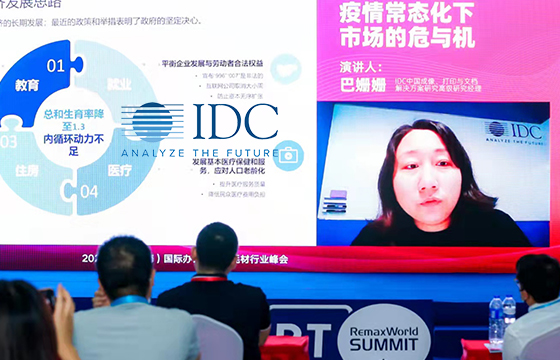Quocirca: Opportunities in Face of Chip Shortage
Quocirca: Opportunities in Face of Chip Shortage
 Why is there a global chip shortage?
Why is there a global chip shortage?
Set to persist well into 2023, the global chip shortage was prompted by the Covid-19 pandemic which has seen a surge in demand for smartphones, laptops and tablets to support remote working as well as consumer demand for home technology. This has put immense pressure on the chip foundries (fabs) leading to chip demand outstripping supply.
Other factors in the mix are disruptive events such as a fire at a Japanese chip factory that supplies the automotive industry, supply chains that rely on Asia for the majority of the world’s semiconductor manufacturing capacity (primarily Taiwan, Korea, and Japan – just 12% are manufactured in the US), raw materials shortages, plant closures and sanctions on Chinese companies.
According to the Semiconductor Industry Association (SIA), global semiconductor industry sales were $45.4 billion in the month of July 2021, an increase of 29% over the July 2020 total of $35.2 billion and 2.1% more than the June 2021 total of $44.5 billion.
This upward trend is likely to continue due to ongoing digitization following the pandemic, the 5G and WiFi 6 upgrade cycles to the wireless market, and the need for more advanced chips for applications such as AI and machine learning along with cloud computing. The continued rapid growth in internet of things (IoT) devices is a further heavy load on a chip market struggling to get back to full supply capabilities.
The semiconductor industry is typically characterized by peaks and troughs and it is thought that the chip shortage could eventually lead to a chip glut as chip manufacturers invest to increase their capacity. In response to the shortages, Taiwan Semiconductor Manufacturing Company (TSMC), the world’s largest semiconductor manufacturer, increased its 2021 capital spending budget to $28 billion.
Meanwhile, in May 2021, the US Senate proposed spending $52 billion to boost domestic chip production over the next five years. This proposal follows President Joe Biden’s February Executive Order mandating a review of US supply chain resilience. The findings of the review were delivered in June, with semiconductor manufacturing prioritized as one of four key sectors to be strengthened. However, funding and building a new semiconductor fab is at least a five-year process, meaning even considerable investment will not deliver a solution in the short-term.
To mitigate the crisis, some companies are exploring alternative solutions, including using substitute chips. For instance, Tesla is rewriting software and firmware to support the alternative chips to maintain high levels of production.
Chip shortage compounds print industry challenges
The print industry has already been hampered by office closures which have seen print volumes decline significantly. The chip shortage is creating further uncertainty in the market, with many OEMs reporting the impact on sales in financial statements. In common with manyindustries, print manufacturers have been using alternative supply routes and re-engineering devices to address customer needs. Beyond the chip shortage, the industry is also facing challenges around the availability of materials, labour shortages, lockdowns and logistics.
Even when chip supplies become more readily available, many device manufacturers will be prioritizing where they place their bets. For example, HP may decide that servers are more profitable than printers and prioritize supplies there. Canon may decide that its camera division is more important than printers – and so on. At any rate, the different types of chips required by different verticals are unlikely to all come back online at the same time, forcing some parts of a device manufacturer’s portfolio to remain in short supply.
Limited chip supplies are pressurizing margins and, unsurprisingly, prices are increasing – according to the The Wall Street Journal, printer prices have risen by more than 20% in a year.
Recommended channel strategies
In an already challenging commercial landscape, how can MPS providers best navigate the supply chain disruption?
As some workers return to the office, organizations may be looking to resize their printer fleets to support a more flexible and hybrid workforce. Extending MPS contracts can only be a short-term solution. This may address immediate supply issues, but as offices reduce office space and so potentially printing needs, the channel must be able to adapt.
There is always the risk that – as offices reassess what office footprint they need – lower print volumes across fewer devices could become the new reality. Of course, there may be opportunities where some companies open up more satellite offices or want to shift to a distributed A4 model within their office headquarters, away from centralized print.
Nevertheless, the industry has long needed to transform beyond box shifting, and the chip shortage should be viewed as a prime opportunity to consider how to build value-add solutions and services around MFP hardware that can pave the way for higher value long term software-centric customer relationships.
Quocirca recommends that the channel reinforces its role as a trusted provider with the following actions:
- Educate customers and offer flexible alternatives. Customers cannot be expected to be fully aware of how much impact the chip shortage is having across a broad range of industry sectors. The channel must take responsibility for explaining why the device that a customer may want is not available and how a different, possibly less modern, device will meet their needs – even if it is for a shorter period of time.
- Early forecasting. Set expectations with customers around long lead times, and monitor changing availability issues, so customers are not making last-minute decisions. Offer assessment services that help customers evaluate and define their technology and MPS roadmap. This becomes more challenging in supporting new starters who require laptops and printers, particularly remote workers. Wherever possible, keep a buffer inventory to support this.
- Diversify portfolio to encompass software and services. Maximize opportunities within existing customers to sell managed IT services, digital workflow and solutions that can help customers get more from their existing equipment. Along with the shift to higher margin software, this is also an opportunity to enhance subscription-based propositions around service and supplies.
- Help customers move printing to the cloud. This is one approach to minimizing dependence on new print servers, and its benefits go beyond hardware. A cloud print infrastructure minimizes IT burden, reduces costs – financial and environmental – and can help an organization better manage and monitor print security.
- Push sustainable options. Many manufacturers are enhancing their green credentials to support the circular economy. As organizations increasingly focus on addressing environmental and sustainability goals, consider that some customers may look to procure used/refurbished products. In addition, deploy solutions to support digitization and the ongoing shift to less-paper environments. While the paperless office may never completely materialize, the channel cannot rest on its laurels in the face of ongoing print volume decline. This has to be offset by digitization and the obvious environmental benefits.
- Capitalize on multi-brand portfolios. While no manufacturer is immune to the chip shortage, there may be opportunities to build a mixed fleet environment based on different manufacturers’ device availability.
The global chip shortage is not going away anytime soon, and customers will be looking for guidance on how to navigate it. Beyond hardware supply chain disruption, the channel should use this to develop new strategies to deepen their software and services portfolio. Security, cloud and automation are all key areas to capitalize on.
Ultimately, the chip shortage should drive a deeper rethink of business models and supply chain tactics in the print industry.
For more information about Quocirca visit www.quocirca.com
Related:
- Quocirca: Print Industry Sees Innovation Opportunity
- Quocirca Reveals Move to Cloud Printing Strengthening
- Quocirca Finds Home Workers are More Productive
- Quocirca Snapshot Survey Reveals Office Print Changes
- Quocirca Snapshot Survey Reveals Office Print Changes
Comment:
Please leave your comments below for the story “Quocirca: Opportunities in Face of Chip Shortage.”







Leave a Comment
Want to join the discussion?Feel free to contribute!